The ancient ruins of Corinth offer one of the most rewarding and accessible day trips from Athens. In fact, we found our visit to Corinth even more enjoyable than the Acropolis, which—while iconic—is often packed with tourists. By contrast, Ancient Corinth remains a lesser-known gem, rich with archaeological wonders and historical significance. Once a major city of classical Greece, it’s a place where history breathes through marble columns, temples, and timeworn streets.
For Christian travelers, Corinth holds special meaning. It’s here that the Apostle Paul lived and preached for 18 months, later penning the well-known biblical letters of First and Second Corinthians. Walking through these ancient paths offers a unique spiritual connection to the early days of Christianity.
In this travel guide, we’ll walk you through everything you need to know about visiting Ancient Corinth on a day trip from Athens—how to get there, what to see, and how to make the most of your experience.
What is the precise location of the ancient city of Corinth
Corinth is strategically located at the northeastern edge of the Peloponnese peninsula, serving as a vital crossroads between mainland Greece and the southern territories. Positioned approximately 80 kilometers west of Athens, the city has long held geographical and commercial significance due to its proximity to the narrow Isthmus of Corinth—a land bridge connecting the Peloponnese to central Greece.
Modern Corinth, a bustling contemporary town, stands near the ancient site but not directly upon it. The archaeological ruins of Ancient Corinth, famed for their classical temples, agora, and the towering Acrocorinth fortress, lie around 8 kilometers to the southwest of the modern city center. Nestled at the foot of the Acrocorinth, these ruins offer a glimpse into the grandeur of a city that once flourished as a major hub of art, trade, and political influence in the ancient Greek world.
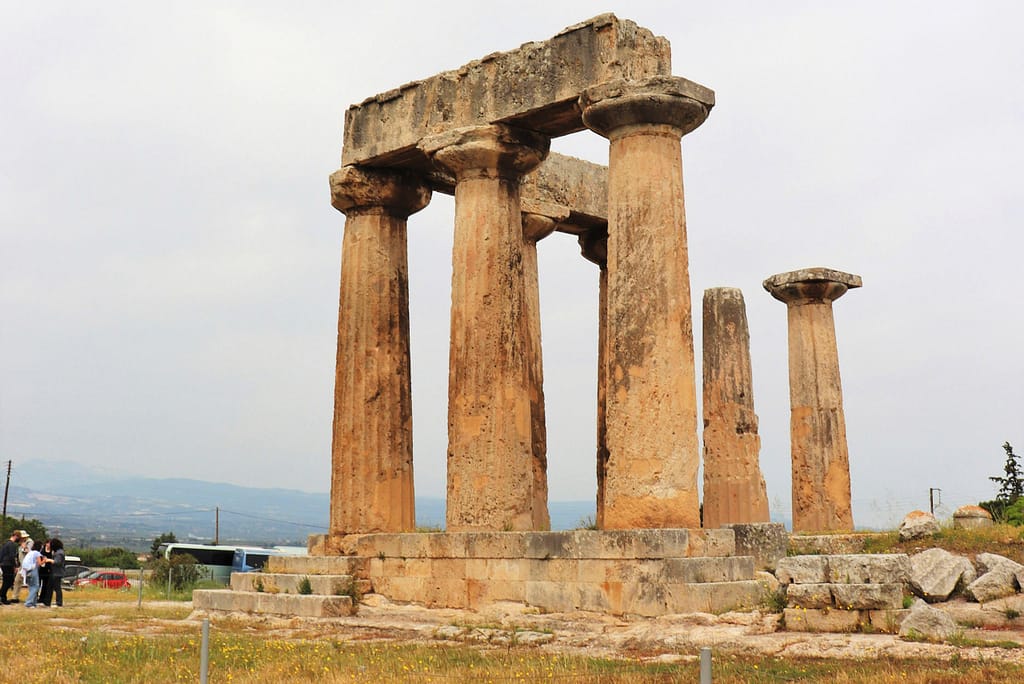
Apollo’s Sacred Temple in the Timeless City of Ancient Corinth
Reaching the Timeless Echoes of Ancient Corinth
• By Tour
GetYourGuide offers well-organized half-day excursions from Athens to Corinth by comfortable coach, perfect for travelers eager to explore the ancient site without the stress of planning. For those with a bit more time, full-day tours are available that also include a stop in the charming coastal town of Nafplio, renowned for its neoclassical beauty and seaside charm.
We’ve personally relied on GetYourGuide for numerous experiences across the globe, and they consistently deliver quality, professionalism, and unforgettable memories. A wholehearted recommendation!
• By Car
If you’re planning to rent a car in Athens—or from another location in Greece—you can easily drive to Corinth on your own. This option offers the greatest flexibility, allowing you to explore the region at your own pace.
The highway connecting Athens to Corinth is modern and well-maintained, making for a smooth and scenic drive. The journey takes approximately one hour, whether you’re heading to the modern town or the nearby archaeological site.
Greece has no shortage of car rental providers, but we highly recommend DiscoverCars. We used them during our Santorini trip and had a fantastic experience—reliable service and competitive rates.
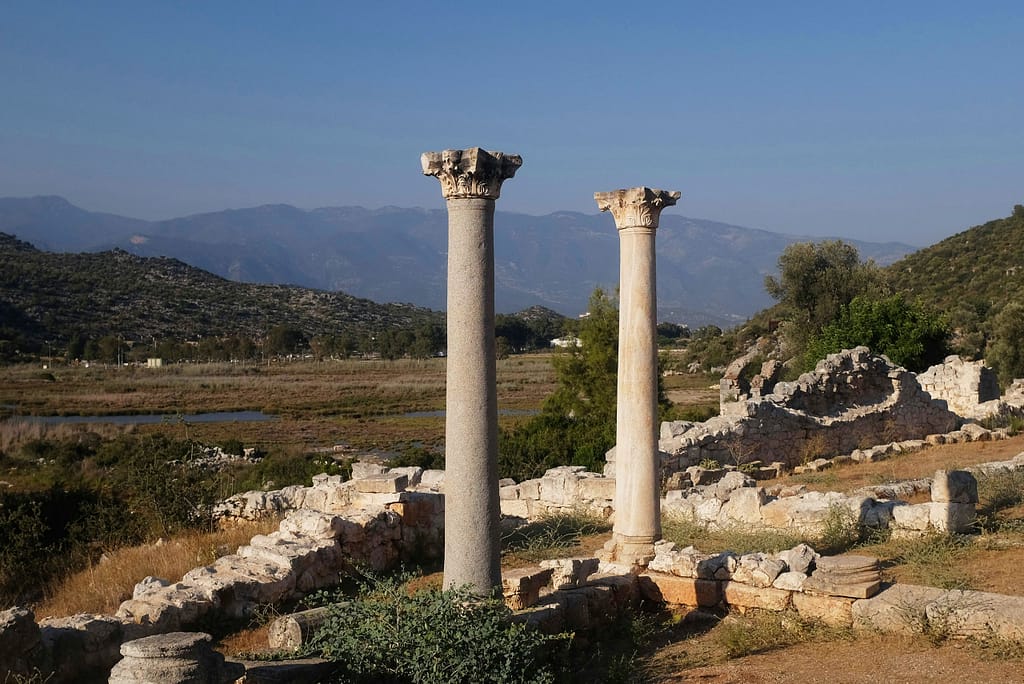
The remains of the ancient city, set against the backdrop of Acrocorinth hill
Note: Your Mount Rushmore parking pass is valid for a full year from the date of purchase. Be sure to keep it in a safe place—it’s your key to return visits without repaying the fee. Perfect for those planning to come back and take in the monument across seasons.
• By Train
Traveling from Athens to Corinth by train is a convenient and comfortable option. Direct routes depart every two hours from Larissa Station, making it easy to plan your journey without stress.
When we took the train to Corinth, purchasing tickets at the Athens station was simple and straightforward. The ride itself is smooth and takes roughly one hour, offering a relaxing way to reach the region.
Upon arrival at Corinth’s train station (map here), a short taxi ride is required to reach the ancient ruins. Taxis are readily available just outside the station, and the journey to the archaeological site takes about 10 minutes. You’ll also find plenty of taxis at the ruins when it’s time to return, ensuring a seamless travel experience.
• By Bus
The KTEL bus company offers a convenient and affordable way to travel from Athens to Corinth, with departures every hour from Kifisou Bus Station (map here). The journey takes around one hour and drops you off at the Isthmus bus station, located near the famous Corinth Canal.
You can view the current schedule and purchase tickets directly through the KTEL website. While the bus continues on to Corinth town, getting off at the Isthmus stop is often more efficient, as it’s no closer to the ruins and stopping there places you within walking distance of the canal—just 100 meters away and well worth a visit.
As with train travel, you’ll need to take a taxi from the bus stop to the archaeological site of Ancient Corinth. The drive is straightforward and takes about 15 minutes, with taxis typically available nearby for a smooth transfer.
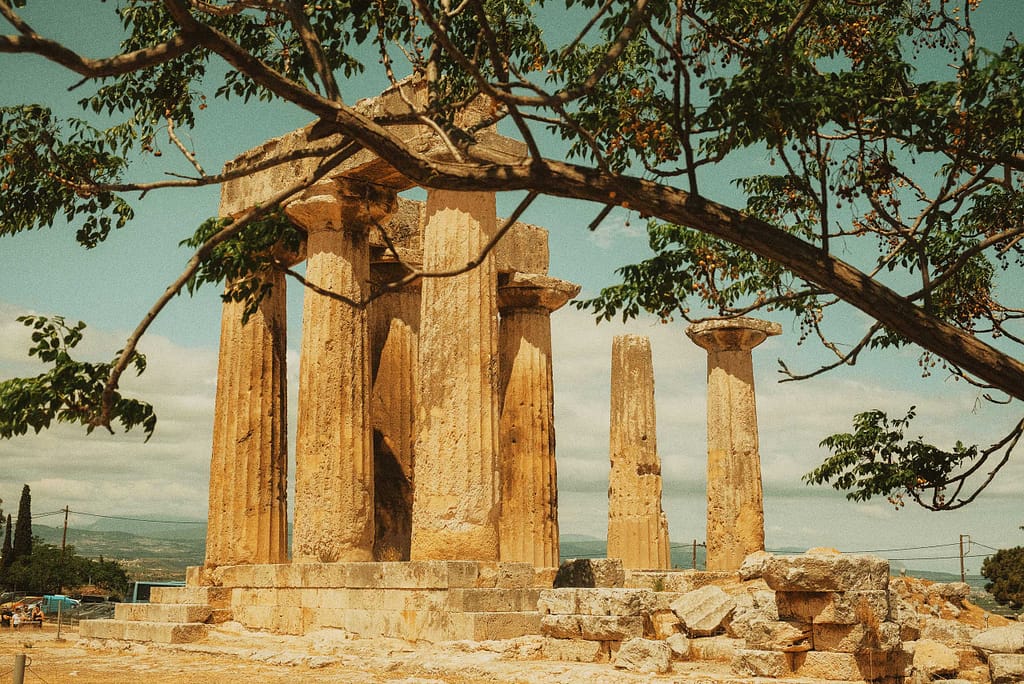
Ancient Columns in Corinth
Highlights of Ancient Corinth’s Timeless Treasures
• Ruins of Apollo’s Temple
The first landmark to greet you in Ancient Corinth is the awe-inspiring Temple of Apollo, instantly recognizable by its iconic, timeworn Doric columns. Constructed around 560 BC, this temple stands as one of the oldest of its kind in mainland Greece. Though only a few of its original columns remain upright, the structure still commands attention—its silent strength echoing the grandeur of a long-lost civilization.
What makes this site especially captivating is the way it aligns with the rugged silhouette of Acrocorinth rising in the background. It creates a dramatic, almost cinematic scene—evocative of the Acropolis in Athens, but with one major difference: tranquility.
No slight intended toward the Acropolis of Athens—it’s undeniably majestic—but our visit there was overwhelmed by crowds and construction. Half the Parthenon was shrouded in scaffolding, and navigating through throngs of visitors made it difficult to truly take in the atmosphere.
Corinth, on the other hand, felt like a breath of fresh air. The ruins were quiet, open, and remarkably uncrowded. We had the space to wander, to reflect, and to really appreciate the ancient stones without distraction. It was a peaceful encounter with the past—rare and unforgettable.
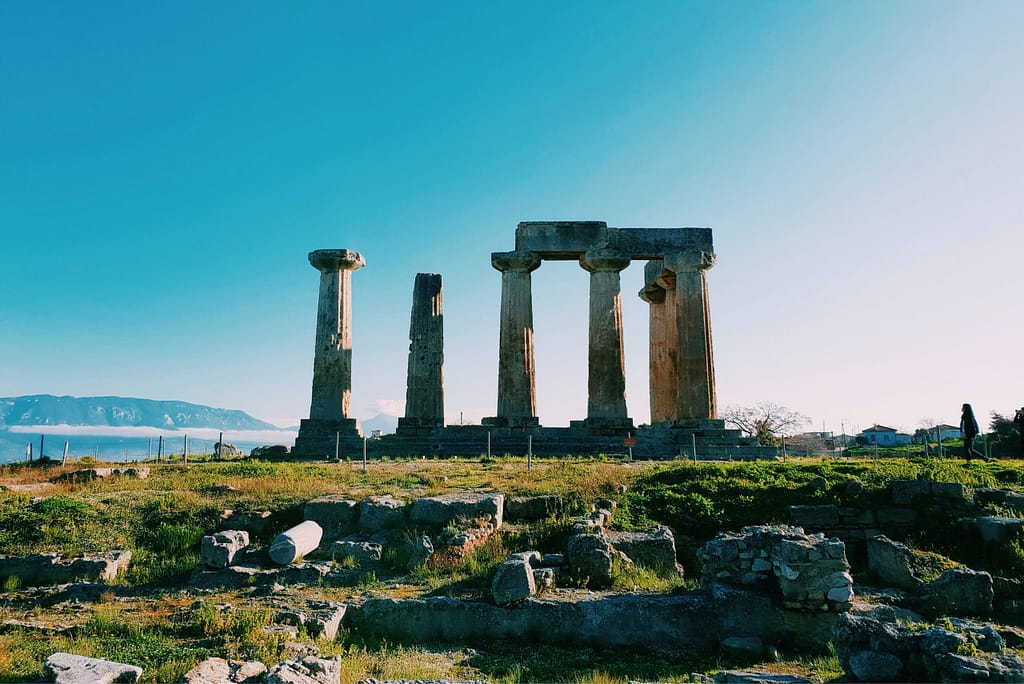
Temple of Apollo
• Mythical Waters of Peirene
This ancient fountain once provided a vital source of fresh water for the city of Corinth, with origins tracing back to around 500 BC.
Though time has worn away much of its original splendor, the remnants still hint at the beauty it once possessed. It’s easy to envision the marble chambers glistening with crystal-clear spring water, a serene and essential feature of daily life in the ancient city.
• Ancient Platform of Judgment
According to the Book of Acts (18:12–16), the Apostle Paul was brought before the judgment seat—known as the bema—here in Ancient Corinth. Accused of teaching doctrines contrary to Jewish law, he stood trial before Gallio, the Roman Proconsul of Achaia. However, Gallio dismissed the charges, declaring the matter a religious dispute outside the scope of Roman law.
Remarkably, the very platform where this moment took place still stands today. Visitors can view the original bema, along with an informational sign that provides historical context about this powerful intersection of faith, law, and empire.
• Ancient Corinth Heritage Museum
Once you’ve finished exploring the ruins of Ancient Corinth, be sure to visit the charming on-site museum nestled within the archaeological grounds.
Though modest in size, the museum offers a rich and carefully curated collection of statues, mosaics, pottery, and everyday artifacts unearthed from the surrounding area. Each piece helps bring the ancient city to life, offering insight into its art, culture, and daily rituals.
Informative signs in English accompany the displays, making it easy to appreciate the significance of each artifact—even without a guide. It’s a quiet but meaningful stop that adds depth and context to your visit.
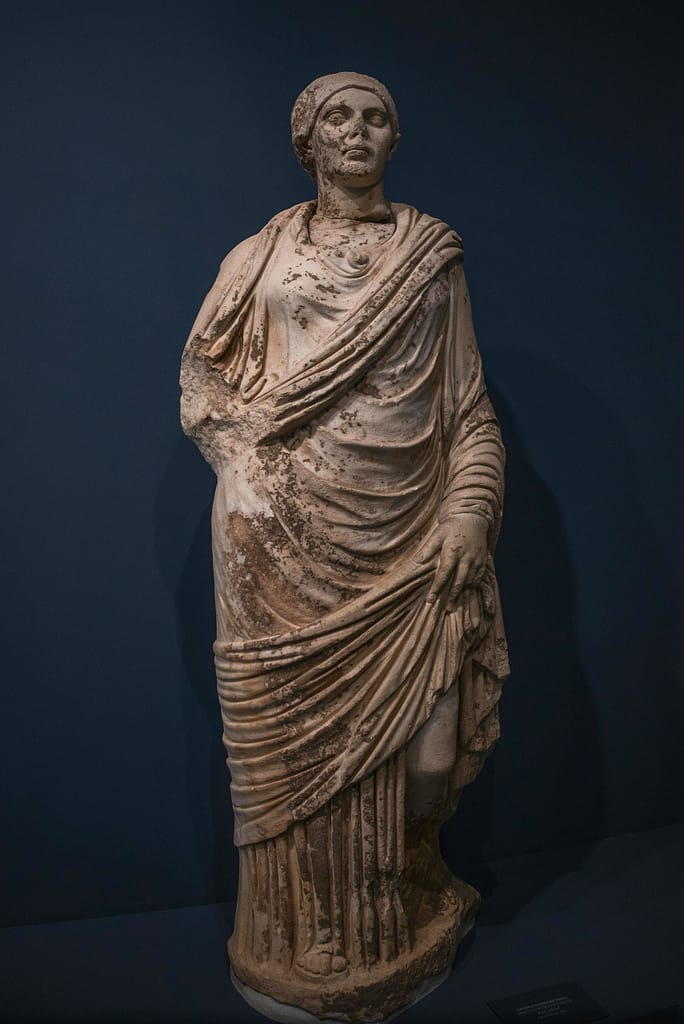
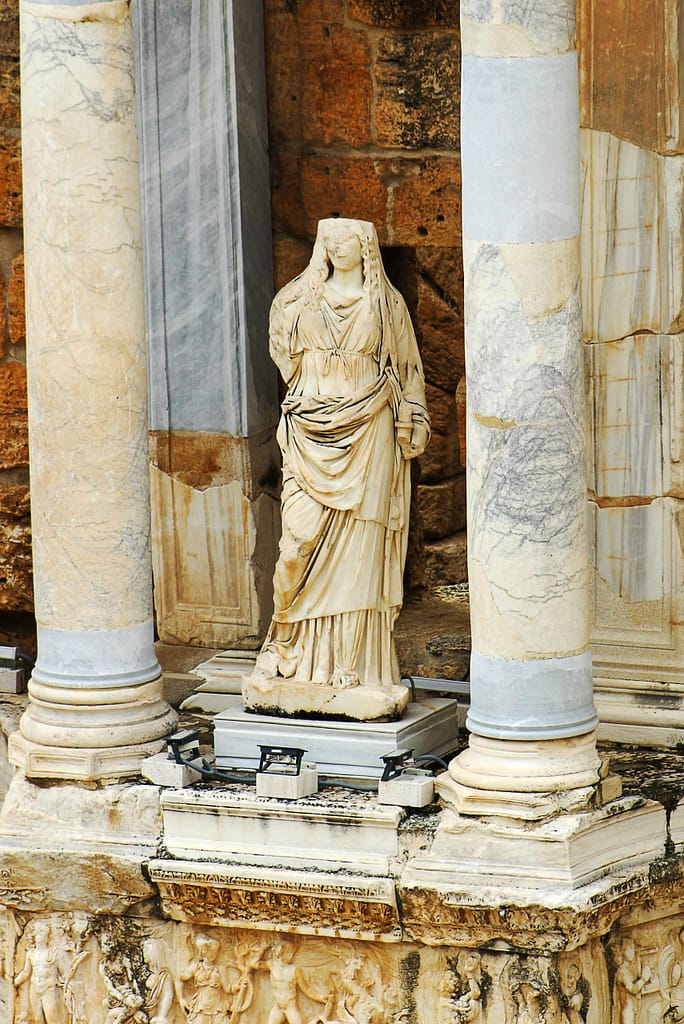
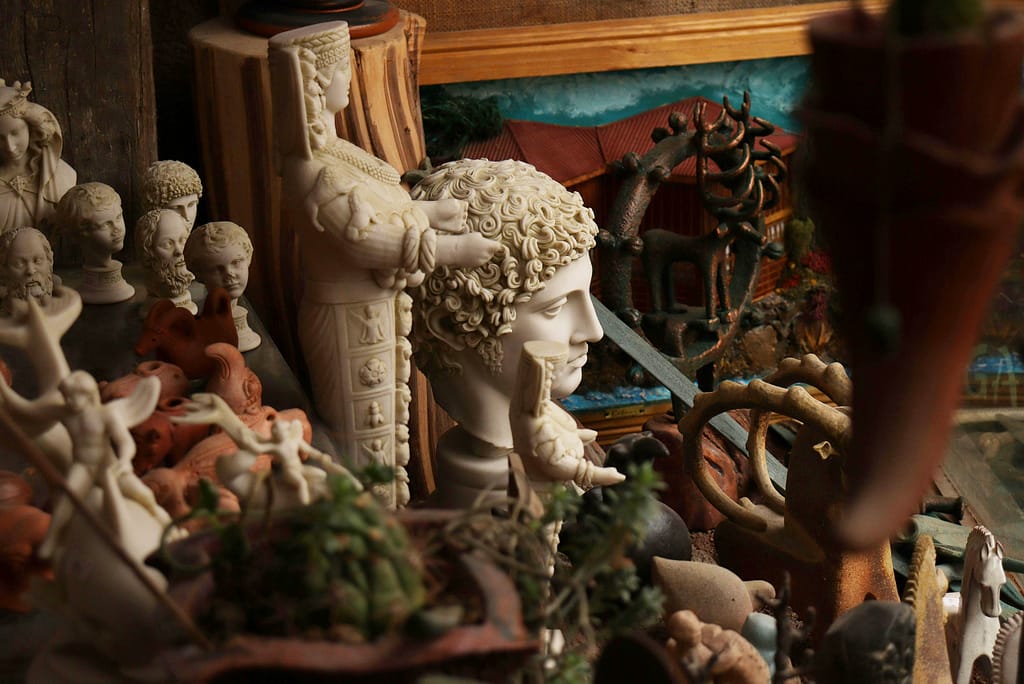
Ancient Statues in Museum
When to Visit & What It Costs
Opening Hours:
Summer Season (April 1 – October 31): Open daily from 8:00 AM to 7:00 PM
Extended hours begin May 1, 2025: 8:00 AM to 8:00 PM
Winter Season (November 1 – March 31): Open daily from 8:30 AM to 3:30 PM
Closed on Tuesdays
Admission Fees:
Summer Rates:
€8 for full access to the archaeological site and museum
€4 for museum-only entry
Winter Rates:
€4 for combined access to both the site and museum
These are the current opening hours and entrance fees as of 2025, but you can check the official website for any changes.
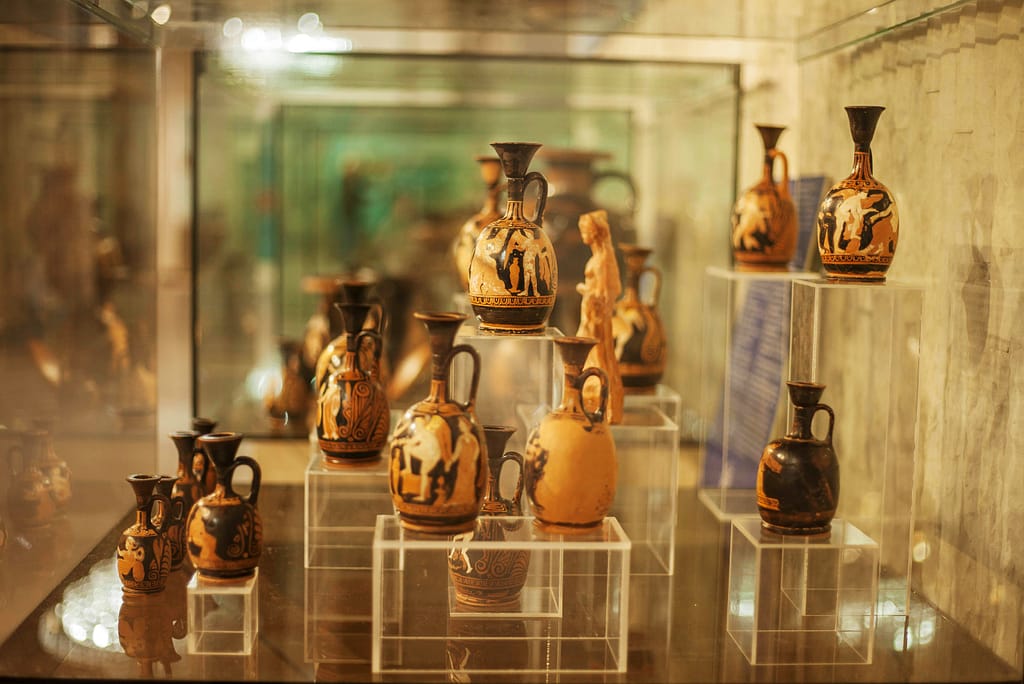
Corinthian pottery exhibits
Duration of Visit
You’ll need just a couple of hours to comfortably explore the main ruins and the Archaeological Museum at Ancient Corinth.
Factoring in travel time to and from Athens, it’s best to set aside at least half a day for the visit. This allows you to fully experience the site without feeling rushed.
If you’re interested in discovering more of what the Corinth area has to offer—such as the striking hilltop fortress of Acrocorinth or the iconic Corinth Canal—you can easily extend your visit into a full-day excursion. Scroll down for more ideas on how to make the most of your trip.
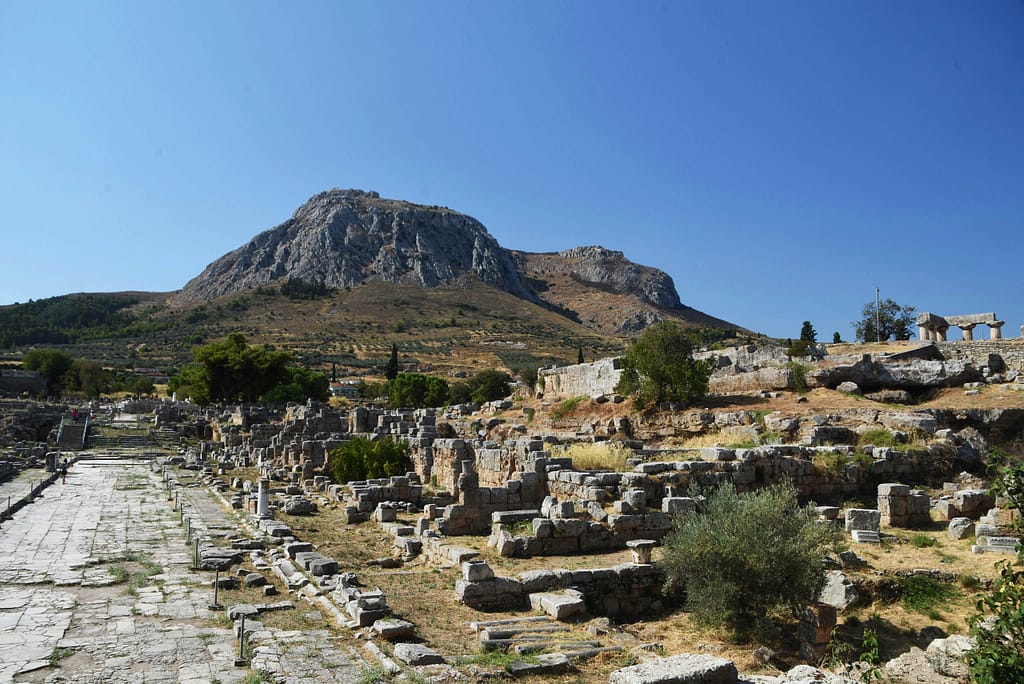
A Naturally Majestic Site for an Ancient City
More to Explore in Corinth
If you’re planning to extend your visit beyond the ancient ruins, the Corinth area offers a variety of fascinating sights—ranging from dramatic fortresses to tranquil beaches and places of Biblical significance. Here are a few worthwhile stops near the town:
- Acrocorinth
Towering above the ancient city, Acrocorinth is a vast hilltop fortress offering sweeping views of both the Saronic and Corinthian Gulfs. Just a 5-minute drive from the archaeological site, it’s well worth the climb. Allow 1–2 hours to explore properly, as the rugged terrain can be demanding. Be sure to bring water and a hat, especially on warm days. - Paralia Kalamia
Modern Corinth’s main beach, Paralia Kalamia, is a relaxed pebbled shoreline with sunbeds, umbrellas, and spots to unwind by the sea. Located just 3 kilometers from the train station, it’s easily walkable in about 30 minutes. - Corinth Canal
An impressive feat of 19th-century engineering, the Corinth Canal slices through the Isthmus, allowing ships to bypass the Peloponnese. Situated 8 kilometers east of Corinth, you’ll likely pass it en route from Athens. It’s a quick but unforgettable photo stop. - Cenchreae Port
Once Corinth’s eastern harbor, Cenchreae holds quiet Biblical significance as the place where the Apostle Paul fulfilled a vow (Acts 18:18). Although little remains today, the site retains a peaceful charm for those interested in early Christian history. - Moni Agias Triadas
This serene monastery lies 8 kilometers south of Corinth, offering a peaceful retreat and a glimpse into Greece’s living religious heritage. A beautiful stop for those seeking calm and local culture. - Paralia Loutra Oreas Elenis
Roughly 15 kilometers southeast of Corinth, this lovely beach combines crystal waters with laid-back tavernas. We enjoyed a delicious seafood meal by the shore—highly recommended if you want to wind down your day by the sea.


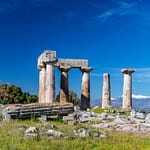


2 Comments
Thanks for sharing the info, really helpful content.
Glad you liked it!